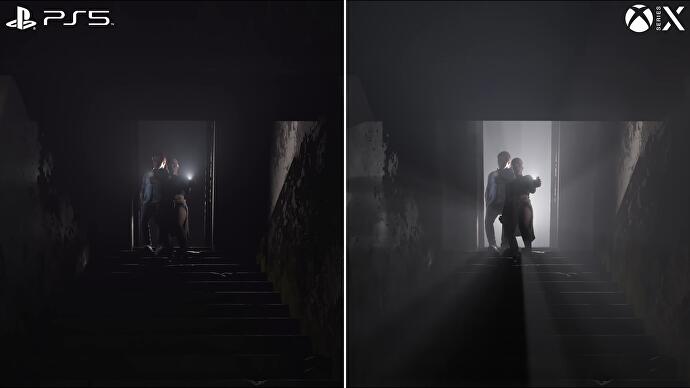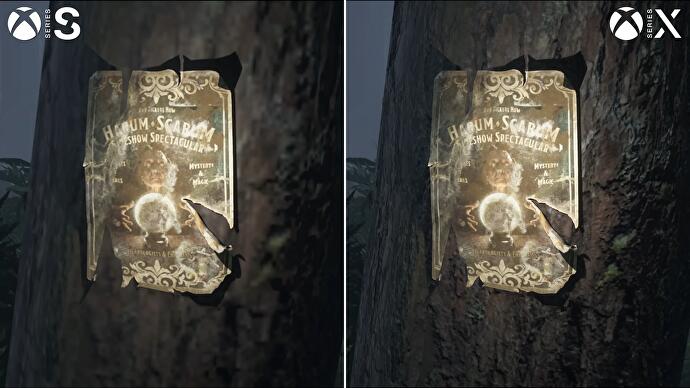The Quarry’s tech shines on PS5 and Series X, only the Series S worries us

Supermassive Games seems to have found a recipe for success with their choose-your-own adventure horror games. The Quarry is the studio’s most compelling and visually stunning work to date. The game uses the popular Unreal Engine and is available for PS5, Xbox Series X/S, PC and last-gen consoles. It’s a true cross-platform release, then, although it was reportedly initially exclusive to Google Stadia. How does each of the platforms fare – particularly the underperforming Series S – and does the unique cinematic presentation work on a technical level? Let’s find out!
Before we get to the numbers, let’s say a few words about The Quarry’s said cinematic presentation. With limited player action – and even a movie mode that completely hides input – the focus is on the actors’ motion capture performances. In a cinematic aspect ratio of 2.35:1, each character is shown in close-ups where any technical imperfections would be fairly obvious.
Luckily, the motion capture technique is excellent, with only a few “uncanny valley” moments, mostly observed with one character (Emma). Even the details stand up to close scrutiny. Skin responds convincingly to flashlight and sunlight, including subsurface scattering that simulates the passage of light through thinner body parts like ears or fingers. The characters’ eyes are also beautifully rendered, with reflections and realistic movements. Overall, it’s a stunning example of real-time character rendering that, along with cinematic framing and depth of field, gives Supermassive the foundations it needs to tell a story.
As one would expect from a game with a cinematic focus, the action targets 4K and uses dynamic resolution scaling to ensure a stable 30fps on PS5 and Xbox Series X. We could see the PS5 drop to 3072×1728 while the Series X dropped to 3328×1872, so ultimately a small advantage for the Series X in the most demanding scenes. However, this is hardly noticeable thanks to numerous post-processings such as TAA (temporal anti-aliasing), heavy camera motion blur, depth of field and other UE tricks. However, one effect seemed to be missing on the PS5 during our testing: the pencils of rays seen in the sky in some scenes on the Series X. This issue was later fixed in an update after our video had already been put together. This restored parity between the two consoles.

On PC, hitting 4K and 30fps is dependent on your hardware, but you also have the option to set the shadow quality to a higher level than consoles, with the Ultra setting offering noticeably softer shadows. The RTX 3060 Ti and Ryzen 7 5700X combo I used in testing managed around 24 frames per second at max settings at 4K. With an RTX 3070 or better, 4K and 30 fps should be possible on ultra settings, assuming the rest of the hardware is up to date.
The Series S is perhaps the most interesting platform, as The Quarry has to make a few trade-offs to cope with the limited performance. Render resolution is set at 1440p but can drop to 900p in more demanding scenes and 1260p in normal gameplay. This reduction in resolution affects fine details such as hair and branches, while post-processing features such as depth of field are rendered at lower quality. Elsewhere, materials and textures are affected, with some textures appearing to come close to Series X. However, some are stuck in a low-resolution state that is similar to a streaming issue, except that a higher-resolution asset never appears. Finally, the pencils of rays are visibly lower-resolution and show noticeable artifacts, the amount of grass has been reduced and shadows have also been downgraded, all in favor of the targeted frame rate of 30 frames per second.



Let’s get to the performance. Both the PS5 and Series X are proving to be robust in this area. Camera cuts sometimes drop a frame, but otherwise the regular 33.3ms refresh rate is maintained as the dynamic resolution system works as intended. The only difference in performance between the two consoles came in a scene where the PS5 dropped to 27 frames per second while the Series X stayed at 30 frames per second. So there is hardly any reason for despair for owners of the Sony console. More interesting is the Series S version, which has bigger issues despite its severe sacrifices in fidelity. The opening drive in the prologue moves between 20 and 30 frames per second, as does another scene at the beginning. But then we recorded almost perfect 30 frames per second for a good two to three hours. The time we have to test each version is limited, but from what we can see the Series S does well in terms of performance.
With The Quarry, Supermassive Games returns to familiar territory, but the tech has evolved a lot since 2015’s Until Dawn. For the most part, Unreal’s detailed motion capture, materials, and post-processing suite look great and support your choices as you progress through the story. PS5 and Series X owners can’t go far wrong, both relying on 4K at a stable 30 fps. On the Series S, the necessary trade-offs for the 4TF console detract somewhat from the experience, but performance is still good. All three versions can still be recommended without reservation, especially in a group The Quarry is a real treat.
And as for 2022, Supermassive’s work isn’t finished yet. We’re getting a second dose of horror later this year with a new installment in the Dark Pictures Anthology: The Devil in Me. We’re also excited to see if technology advances in the next game.
![]()
Originally written by Thomas Morgan, Senior Staff Writer, Digital Foundry
Reference-www.eurogamer.de